Fuxun Yu
Revisiting Pre-trained Language Models for Vulnerability Detection
Jul 22, 2025Abstract:The rapid advancement of pre-trained language models (PLMs) has demonstrated promising results for various code-related tasks. However, their effectiveness in detecting real-world vulnerabilities remains a critical challenge. % for the security community. While existing empirical studies evaluate PLMs for vulnerability detection (VD), their inadequate consideration in data preparation, evaluation setups, and experimental settings undermines the accuracy and comprehensiveness of evaluations. This paper introduces RevisitVD, an extensive evaluation of 17 PLMs spanning smaller code-specific PLMs and large-scale PLMs using newly constructed datasets. Specifically, we compare the performance of PLMs under both fine-tuning and prompt engineering, assess their effectiveness and generalizability across various training and testing settings, and analyze their robustness against code normalization, abstraction, and semantic-preserving transformations. Our findings reveal that, for VD tasks, PLMs incorporating pre-training tasks designed to capture the syntactic and semantic patterns of code outperform both general-purpose PLMs and those solely pre-trained or fine-tuned on large code corpora. However, these models face notable challenges in real-world scenarios, such as difficulties in detecting vulnerabilities with complex dependencies, handling perturbations introduced by code normalization and abstraction, and identifying semantic-preserving vulnerable code transformations. Also, the truncation caused by the limited context windows of PLMs can lead to a non-negligible amount of labeling errors. This study underscores the importance of thorough evaluations of model performance in practical scenarios and outlines future directions to help enhance the effectiveness of PLMs for realistic VD applications.
Multi-Agent Geospatial Copilots for Remote Sensing Workflows
Jan 27, 2025



Abstract:We present GeoLLM-Squad, a geospatial Copilot that introduces the novel multi-agent paradigm to remote sensing (RS) workflows. Unlike existing single-agent approaches that rely on monolithic large language models (LLM), GeoLLM-Squad separates agentic orchestration from geospatial task-solving, by delegating RS tasks to specialized sub-agents. Built on the open-source AutoGen and GeoLLM-Engine frameworks, our work enables the modular integration of diverse applications, spanning urban monitoring, forestry protection, climate analysis, and agriculture studies. Our results demonstrate that while single-agent systems struggle to scale with increasing RS task complexity, GeoLLM-Squad maintains robust performance, achieving a 17% improvement in agentic correctness over state-of-the-art baselines. Our findings highlight the potential of multi-agent AI in advancing RS workflows.
FedCAP: Robust Federated Learning via Customized Aggregation and Personalization
Oct 16, 2024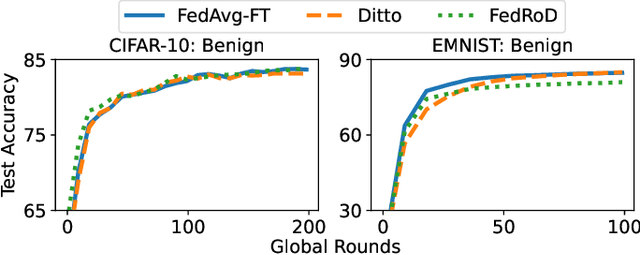

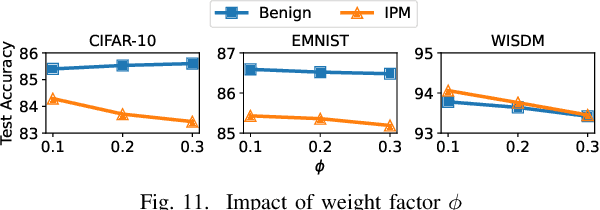
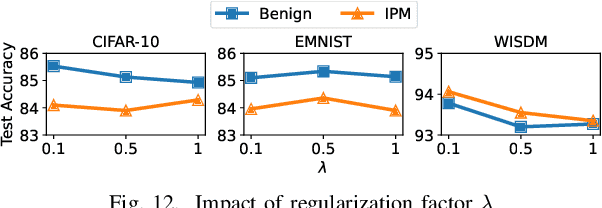
Abstract:Federated learning (FL), an emerging distributed machine learning paradigm, has been applied to various privacy-preserving scenarios. However, due to its distributed nature, FL faces two key issues: the non-independent and identical distribution (non-IID) of user data and vulnerability to Byzantine threats. To address these challenges, in this paper, we propose FedCAP, a robust FL framework against both data heterogeneity and Byzantine attacks. The core of FedCAP is a model update calibration mechanism to help a server capture the differences in the direction and magnitude of model updates among clients. Furthermore, we design a customized model aggregation rule that facilitates collaborative training among similar clients while accelerating the model deterioration of malicious clients. With a Euclidean norm-based anomaly detection mechanism, the server can quickly identify and permanently remove malicious clients. Moreover, the impact of data heterogeneity and Byzantine attacks can be further mitigated through personalization on the client side. We conduct extensive experiments, comparing multiple state-of-the-art baselines, to demonstrate that FedCAP performs well in several non-IID settings and shows strong robustness under a series of poisoning attacks.
Online Learning via Memory: Retrieval-Augmented Detector Adaptation
Sep 16, 2024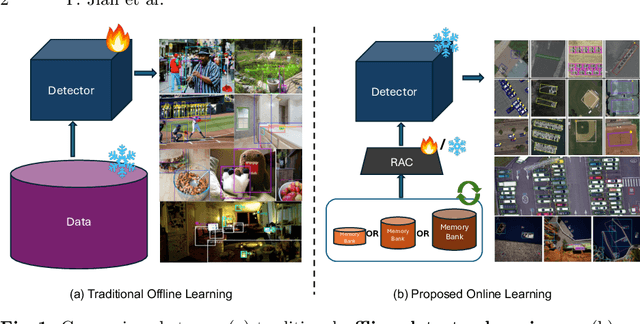
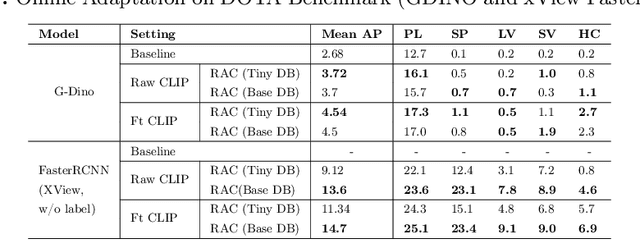
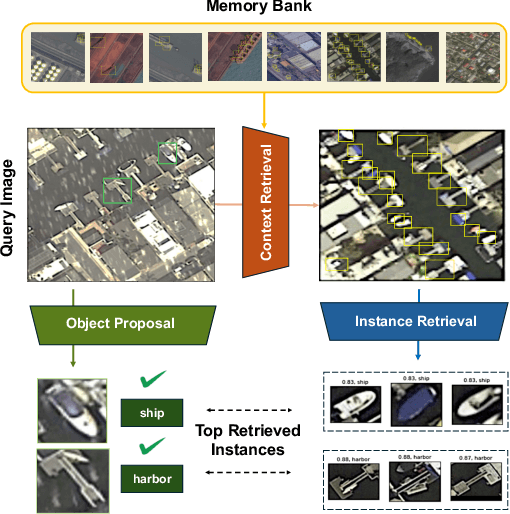

Abstract:This paper presents a novel way of online adapting any off-the-shelf object detection model to a novel domain without retraining the detector model. Inspired by how humans quickly learn knowledge of a new subject (e.g., memorization), we allow the detector to look up similar object concepts from memory during test time. This is achieved through a retrieval augmented classification (RAC) module together with a memory bank that can be flexibly updated with new domain knowledge. We experimented with various off-the-shelf open-set detector and close-set detectors. With only a tiny memory bank (e.g., 10 images per category) and being training-free, our online learning method could significantly outperform baselines in adapting a detector to novel domains.
LLM-dCache: Improving Tool-Augmented LLMs with GPT-Driven Localized Data Caching
Jun 10, 2024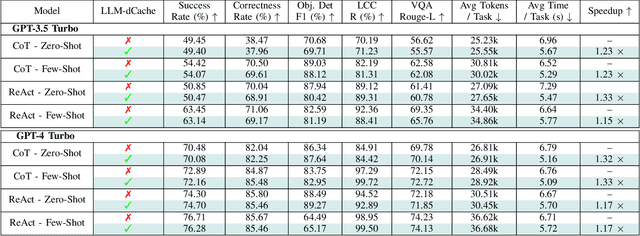


Abstract:As Large Language Models (LLMs) broaden their capabilities to manage thousands of API calls, they are confronted with complex data operations across vast datasets with significant overhead to the underlying system. In this work, we introduce LLM-dCache to optimize data accesses by treating cache operations as callable API functions exposed to the tool-augmented agent. We grant LLMs the autonomy to manage cache decisions via prompting, seamlessly integrating with existing function-calling mechanisms. Tested on an industry-scale massively parallel platform that spans hundreds of GPT endpoints and terabytes of imagery, our method improves Copilot times by an average of 1.24x across various LLMs and prompting techniques.
Infinite-Dimensional Feature Interaction
May 22, 2024



Abstract:The past neural network design has largely focused on feature representation space dimension and its capacity scaling (e.g., width, depth), but overlooked the feature interaction space scaling. Recent advancements have shown shifted focus towards element-wise multiplication to facilitate higher-dimensional feature interaction space for better information transformation. Despite this progress, multiplications predominantly capture low-order interactions, thus remaining confined to a finite-dimensional interaction space. To transcend this limitation, classic kernel methods emerge as a promising solution to engage features in an infinite-dimensional space. We introduce InfiNet, a model architecture that enables feature interaction within an infinite-dimensional space created by RBF kernel. Our experiments reveal that InfiNet achieves new state-of-the-art, owing to its capability to leverage infinite-dimensional interactions, significantly enhancing model performance.
QuadraNet V2: Efficient and Sustainable Training of High-Order Neural Networks with Quadratic Adaptation
May 06, 2024

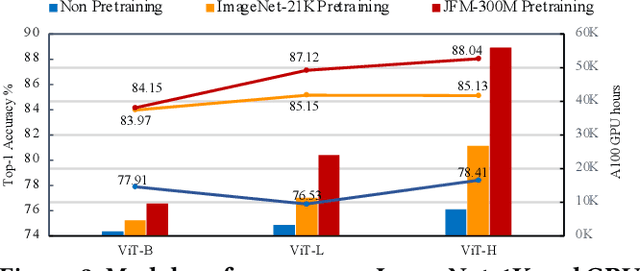

Abstract:Machine learning is evolving towards high-order models that necessitate pre-training on extensive datasets, a process associated with significant overheads. Traditional models, despite having pre-trained weights, are becoming obsolete due to architectural differences that obstruct the effective transfer and initialization of these weights. To address these challenges, we introduce a novel framework, QuadraNet V2, which leverages quadratic neural networks to create efficient and sustainable high-order learning models. Our method initializes the primary term of the quadratic neuron using a standard neural network, while the quadratic term is employed to adaptively enhance the learning of data non-linearity or shifts. This integration of pre-trained primary terms with quadratic terms, which possess advanced modeling capabilities, significantly augments the information characterization capacity of the high-order network. By utilizing existing pre-trained weights, QuadraNet V2 reduces the required GPU hours for training by 90\% to 98.4\% compared to training from scratch, demonstrating both efficiency and effectiveness.
Out-of-Distribution Detection via Deep Multi-Comprehension Ensemble
Mar 24, 2024



Abstract:Recent research underscores the pivotal role of the Out-of-Distribution (OOD) feature representation field scale in determining the efficacy of models in OOD detection. Consequently, the adoption of model ensembles has emerged as a prominent strategy to augment this feature representation field, capitalizing on anticipated model diversity. However, our introduction of novel qualitative and quantitative model ensemble evaluation methods, specifically Loss Basin/Barrier Visualization and the Self-Coupling Index, reveals a critical drawback in existing ensemble methods. We find that these methods incorporate weights that are affine-transformable, exhibiting limited variability and thus failing to achieve the desired diversity in feature representation. To address this limitation, we elevate the dimensions of traditional model ensembles, incorporating various factors such as different weight initializations, data holdout, etc., into distinct supervision tasks. This innovative approach, termed Multi-Comprehension (MC) Ensemble, leverages diverse training tasks to generate distinct comprehensions of the data and labels, thereby extending the feature representation field. Our experimental results demonstrate the superior performance of the MC Ensemble strategy in OOD detection compared to both the naive Deep Ensemble method and a standalone model of comparable size. This underscores the effectiveness of our proposed approach in enhancing the model's capability to detect instances outside its training distribution.
QuadraNet: Improving High-Order Neural Interaction Efficiency with Hardware-Aware Quadratic Neural Networks
Nov 29, 2023Abstract:Recent progress in computer vision-oriented neural network designs is mostly driven by capturing high-order neural interactions among inputs and features. And there emerged a variety of approaches to accomplish this, such as Transformers and its variants. However, these interactions generate a large amount of intermediate state and/or strong data dependency, leading to considerable memory consumption and computing cost, and therefore compromising the overall runtime performance. To address this challenge, we rethink the high-order interactive neural network design with a quadratic computing approach. Specifically, we propose QuadraNet -- a comprehensive model design methodology from neuron reconstruction to structural block and eventually to the overall neural network implementation. Leveraging quadratic neurons' intrinsic high-order advantages and dedicated computation optimization schemes, QuadraNet could effectively achieve optimal cognition and computation performance. Incorporating state-of-the-art hardware-aware neural architecture search and system integration techniques, QuadraNet could also be well generalized in different hardware constraint settings and deployment scenarios. The experiment shows thatQuadraNet achieves up to 1.5$\times$ throughput, 30% less memory footprint, and similar cognition performance, compared with the state-of-the-art high-order approaches.
Stable Diffusion For Aerial Object Detection
Nov 21, 2023



Abstract:Aerial object detection is a challenging task, in which one major obstacle lies in the limitations of large-scale data collection and the long-tail distribution of certain classes. Synthetic data offers a promising solution, especially with recent advances in diffusion-based methods like stable diffusion (SD). However, the direct application of diffusion methods to aerial domains poses unique challenges: stable diffusion's optimization for rich ground-level semantics doesn't align with the sparse nature of aerial objects, and the extraction of post-synthesis object coordinates remains problematic. To address these challenges, we introduce a synthetic data augmentation framework tailored for aerial images. It encompasses sparse-to-dense region of interest (ROI) extraction to bridge the semantic gap, fine-tuning the diffusion model with low-rank adaptation (LORA) to circumvent exhaustive retraining, and finally, a Copy-Paste method to compose synthesized objects with backgrounds, providing a nuanced approach to aerial object detection through synthetic data.
 Add to Chrome
Add to Chrome Add to Firefox
Add to Firefox Add to Edge
Add to Edge